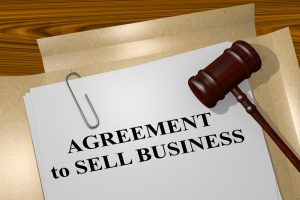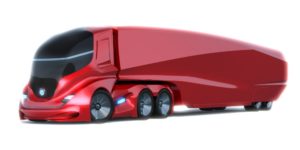“In our last episode,” (I’ve always wanted to say that) we discussed the exit paths that are not usually available when exiting a small business. Those are ESOP, Private Equity, and Strategic Acquisition. Now let’s talk about what you can do.
The Realities of Selling to a Third Party
Multiple surveys over the last decade all show the same result. About 85% of small business (5 to 20 employees) owners say that their exit plan is to sell to a third party.
Let’s do the math. There are currently over 3,000,000 small business owners over 55 years old in the USA. We can assume that by the time the youngest is 75, virtually all will have exited their businesses. That means an average of 150,000 businesses a year will transfer or close.
According to the International Business Brokers Association (IBBA), their intermediaries execute about 40,000 transactions a year. It should be a bull market for intermediaries (although not for sellers.) Let’s assign them 50,000 transactions annually.
That leaves 100,000 small businesses a year who will have to find methods of transfer other than through a business broker.
Broker Alternatives
 Business Brokers can be cynical about their clients. They commonly complain that the best businesses sell through their accountants, bankers, attorneys, or word of mouth. Their listings consist mostly of the “Dismal Ds,” (Death, Disease, Disaster, Divorce, Declining sales, Dissention among partners, Disinterest, etc.) While this is an exaggeration, it’s true that the better shape your business is in, the more likely it is to sell easily.
Business Brokers can be cynical about their clients. They commonly complain that the best businesses sell through their accountants, bankers, attorneys, or word of mouth. Their listings consist mostly of the “Dismal Ds,” (Death, Disease, Disaster, Divorce, Declining sales, Dissention among partners, Disinterest, etc.) While this is an exaggeration, it’s true that the better shape your business is in, the more likely it is to sell easily.
If you’ve prepared your business well, understand your potential buyer, and are personally ready to move on, your best bet for selling is probably your business network.
Being Ready
Brokers sell about 20% of the businesses they list. Again, that number has been consistent for decades. According to the Pepperdine Private Capital Markets Report, the number one reason for an intermediary’s failure to sell a business is “unreasonable expectations of value” by the seller.
Again, that may be self-serving, but brokers are paid for success. None would sneer at a higher valuation if he or she could get it. A realistic expectation of value is the first and most important step in a successful sale.
Some brokers will take a listing at any price. They believe that eventually, the market reaction will drive their clients to a reality check. The problem with that approach is that the first buyers, and possibly the most qualified, are driven off by an unreasonable price at the outset. They don’t come back later.
If you plan on selling to a third party, you will be best served by being prepared before you talk to a broker. There are a lot more areas to cover, and this series of articles is just a high-level view of your options. For a more complete approach, you may want to check out my book 11 Things You Absolutely Need to Know about Selling Your Business. The EBook is free for Kindle Unlimited subscribers.
Next up, selling to family members.


 Mid-market companies sell for between $3,000,000 and $100,000,000. Financial Buyers include private equity firms and family offices. These buyers usually seek acquisitions where the cash flow is in excess of $1,000,000 a year.
Mid-market companies sell for between $3,000,000 and $100,000,000. Financial Buyers include private equity firms and family offices. These buyers usually seek acquisitions where the cash flow is in excess of $1,000,000 a year. What if autonomous trucks were limited to driving from 8:00 PM to 6:00 AM? A few lanes on interstate highways could easily be electronically tagged for higher speed, and robot-truck only use. They can follow more closely, having both quicker reaction times and the connected ability to “see” what is happening further ahead. A truck that doesn’t have to stop for food or sleep could cover a lot of ground in ten hours of high speed driving. Daytimes would be reserved for human-operated local delivery.
What if autonomous trucks were limited to driving from 8:00 PM to 6:00 AM? A few lanes on interstate highways could easily be electronically tagged for higher speed, and robot-truck only use. They can follow more closely, having both quicker reaction times and the connected ability to “see” what is happening further ahead. A truck that doesn’t have to stop for food or sleep could cover a lot of ground in ten hours of high speed driving. Daytimes would be reserved for human-operated local delivery.